St. Giles' Interior
|
St. Giles' interior The oldest parts of the building are four massive central pillars, often said to date from 1124, although there is very little evidence to this effect. In 1385 the building suffered a fire and was rebuilt in the subsequent years. Much of the current interior dates from this period. Over the years many chapels, referred to as 'aisles', were added, greatly enlarging the church and leaving it rather irregular in plan. In 1466 St Giles was established as a collegiate church. In response to this raising of status, the lantern tower was added around 1490, and the chancel ceiling raised, vaulted and a clear storey installed. By the middle of the 16th century (before the Reformation) there were about fifty altars in the church. Photo 1016, May 2011 |
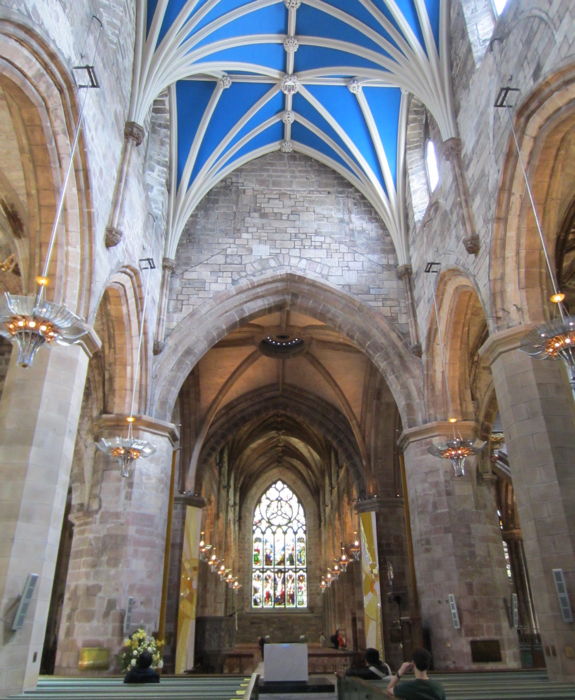
|
|
interior
Photo 1036, May 2011 |
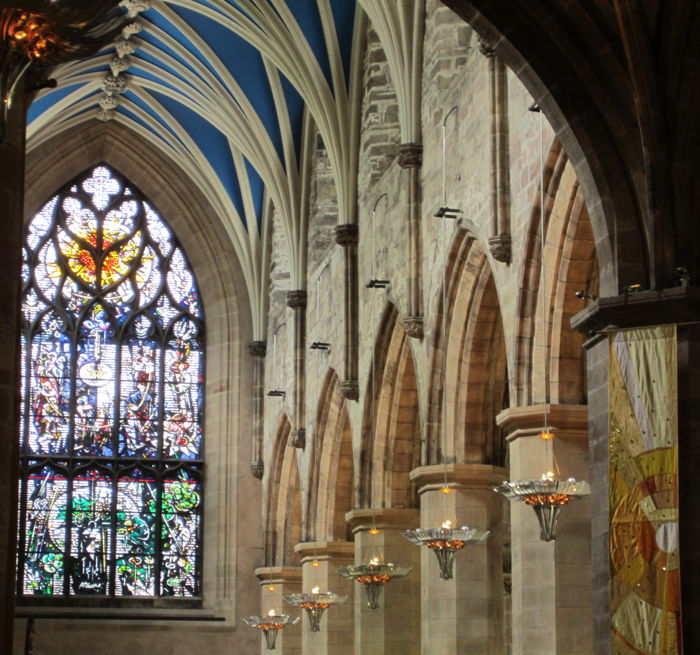
|
|
interior
Photo 1047, May 2011 |
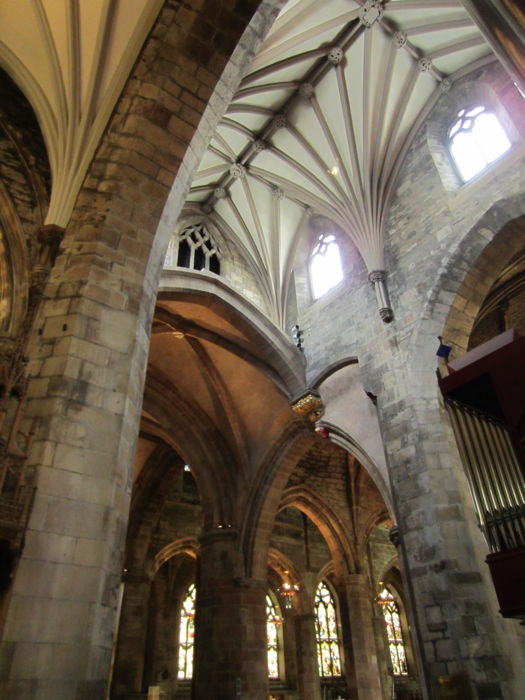
|
|
interior
Photo 1048, May 2011 |
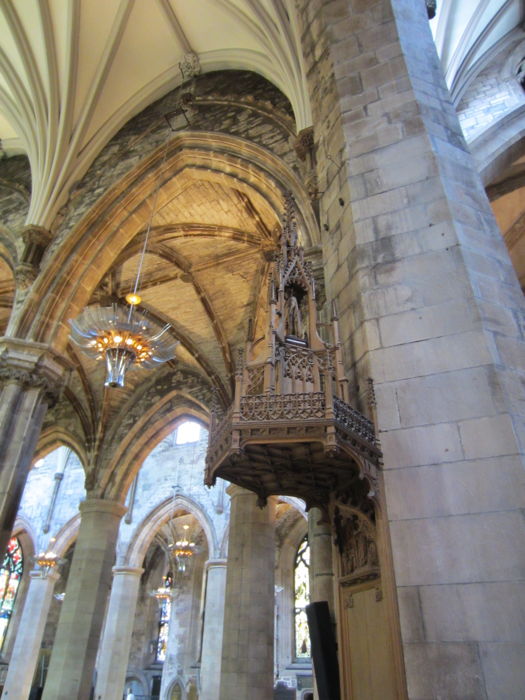
|
|
Pulpit
Photo 999, May 2011 |
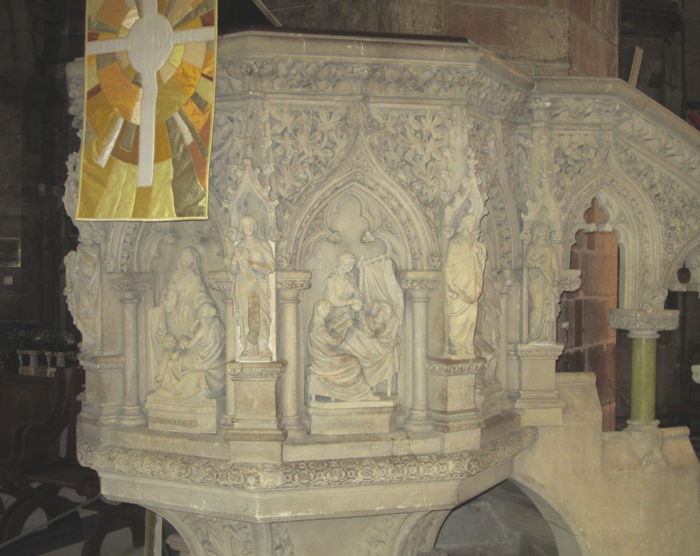
|
|
Organ
Photo 1001, May 2011 |

|
|
Pulpit
Photo 1003, May 2011 |
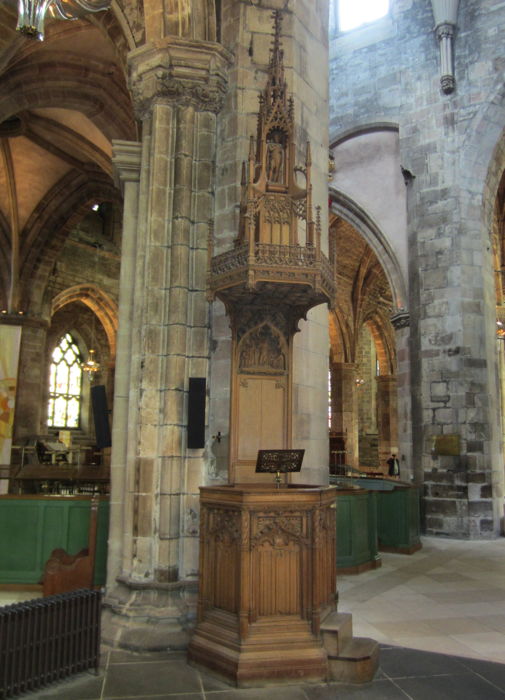
|
|
Top of pulpit
Photo 1004, May 2011 |
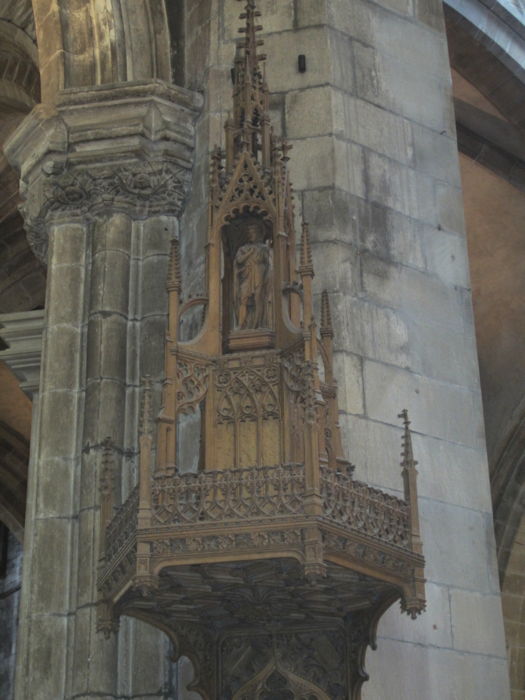
|
|
A bronze relief memorial to Robert Lewis Stevenson, designed by American sculptor Augustus Saint-Gaudens in 1904, is mounted in the Moray Aisle of St Giles' Cathedral.
Photo 1006, May 2011 |
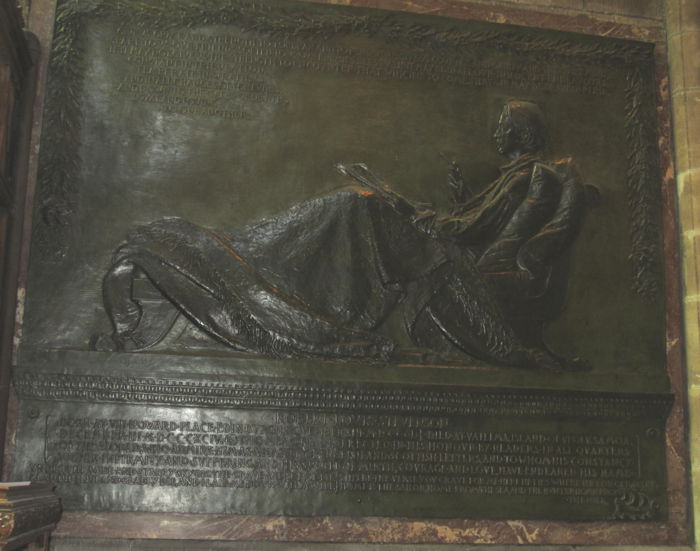
|
|
War memorials
Photo 1015, May 2011 |
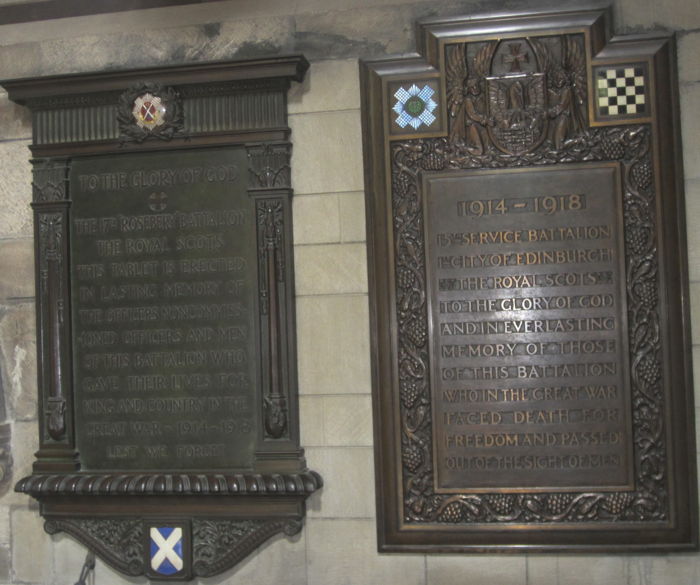
|
|
John Knox Statue Near the west end of the Cathedral is a statue of John Knox, cast in 1904 by the sculptor Pittendrigh MacGillivray. The statue conveys something of Knox’s energy that those who heard him must have felt. Even when he was old and infirm ‘he was sa active and vigorous that he was lyk to ding that pulpit in blads and fly out of it’. Photo 1021, May 2011 |
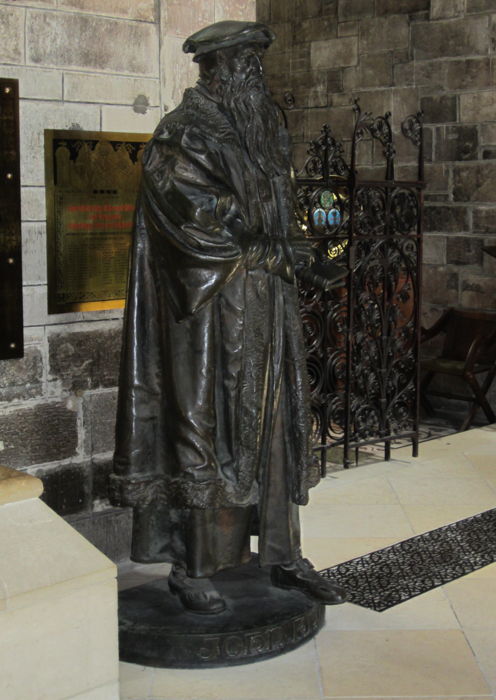
|
|
John Knox Statue
Photo 1025, May 2011 |
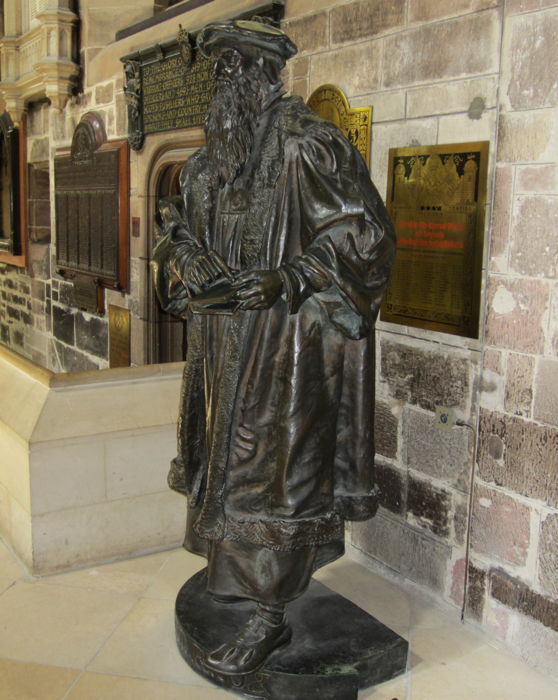
|
|
Argyll's tomb in St. Giles Archibald Campbell, 1st Marquess of Argyll, 8th Earl of Argyll, chief of Clan Campbell, (1607 – 27 May 1661) was the de facto head of government in Scotland during most of the conflict known as the Wars of the Three Kingdoms, also known as the British Civil War. He was a major figure in the Covenanter movement that fought for the Presbyterian religion and what they saw as Scottish interests during the English Civil War of the 1640s and 1650s. He is often remembered as the arch-enemy of the royalist general James Graham, 1st Marquess of Montrose. Photo 1022, May 2011 |
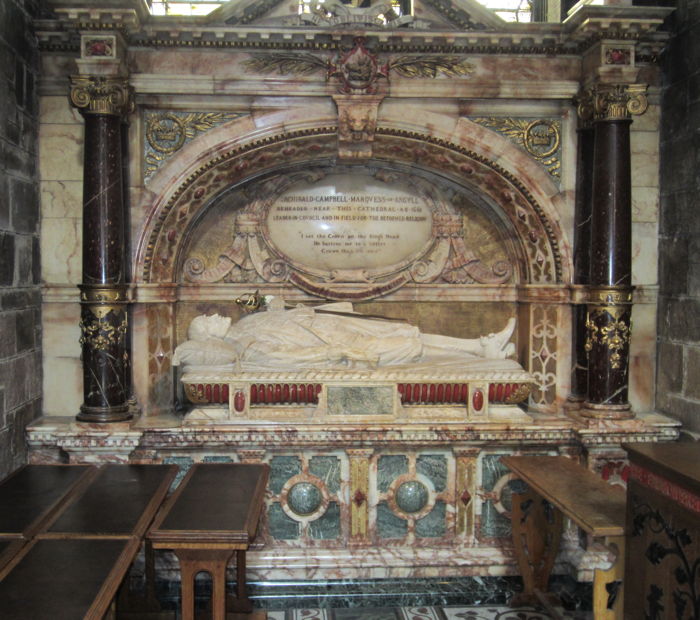
|
|
Argyll's tomb in St. Giles
Photo 1023, May 2011 |
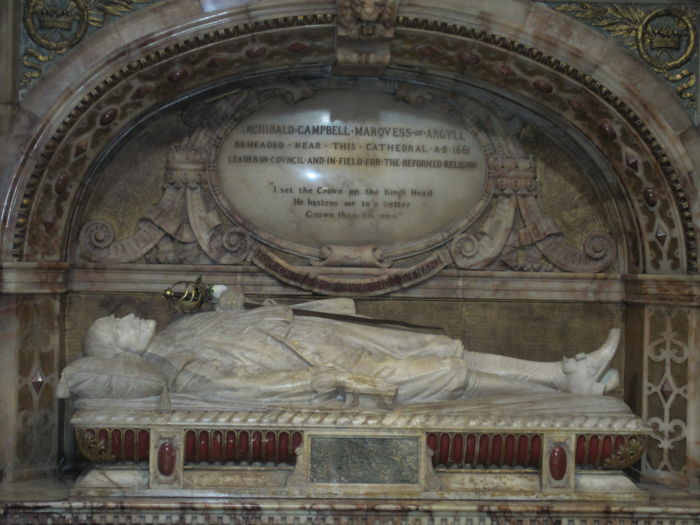
|
|
Interior
Photo 1026, May 2011 |
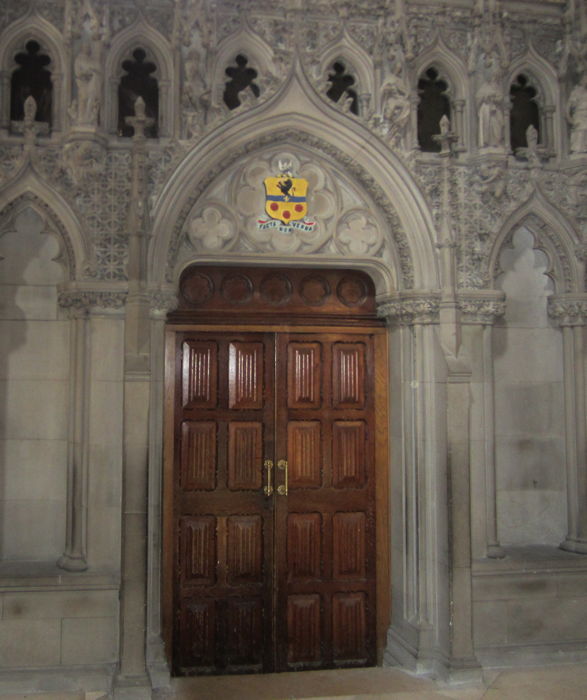
|
|
Interior
Photo 1027, May 2011 |

|
|
Interior
Photo 1028, May 2011 |
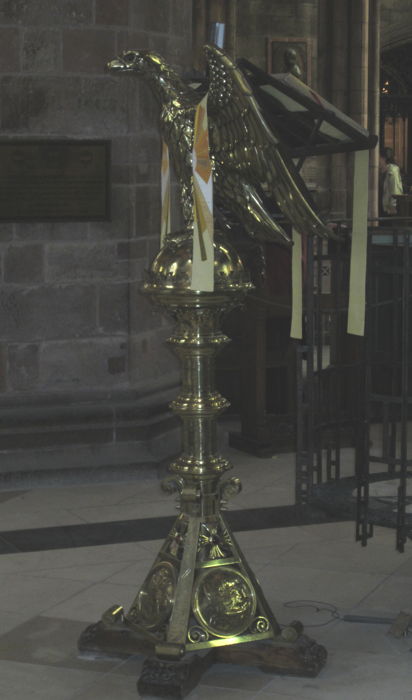
|
|
Ship's bell of HMS Howe HMS Howe was built at Fairfield's yard on the Clyde and commissioned in 1942,seeing war service in home waters, the Mediterranean and the Far East. She was adopted by the city of Edinburgh and when scrapped in 1957 the bell was given to the city and placed in St Giles Cathedral. When a baby of a crew member of an RN ship was christened it was the custom to up-end the bell and use it as a font and scratch the name inside on the lip of the bell. There is indeed a name inside this bell but requires a mirror to see it. Photo 1030, May 2011 |
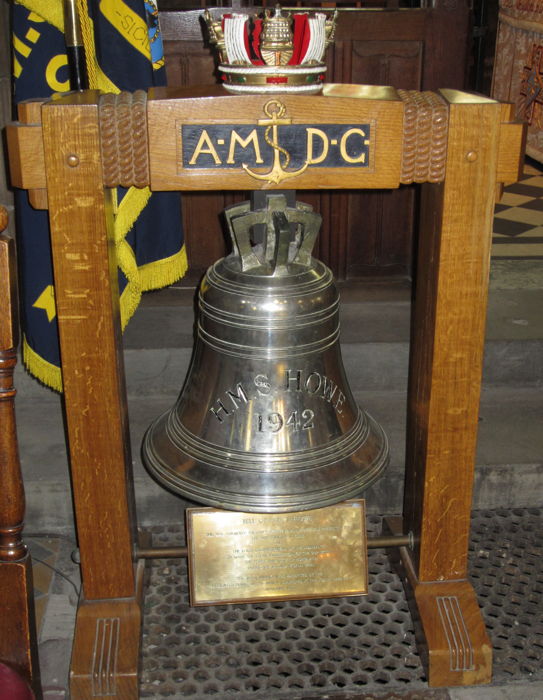
|
|
Interior
Photo 1031, May 2011 |
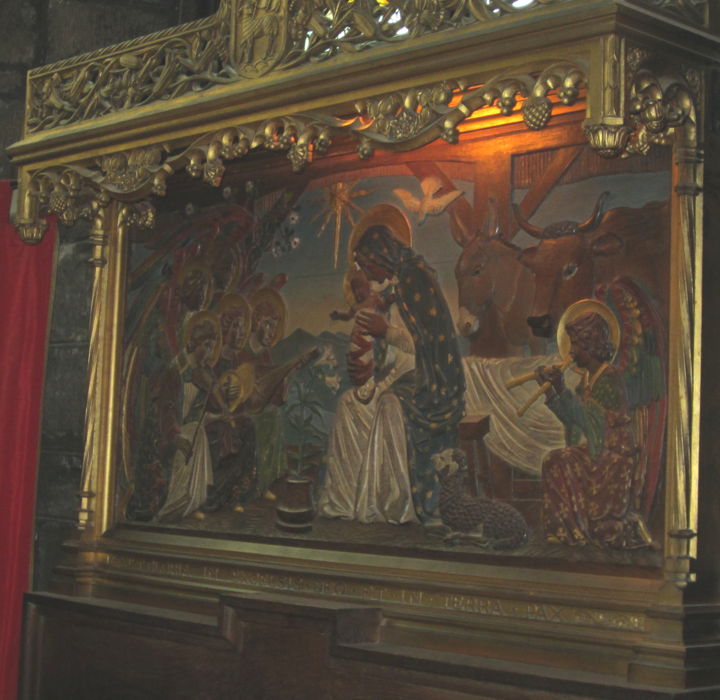
|
|
Interior
Photo 1033, May 2011 |
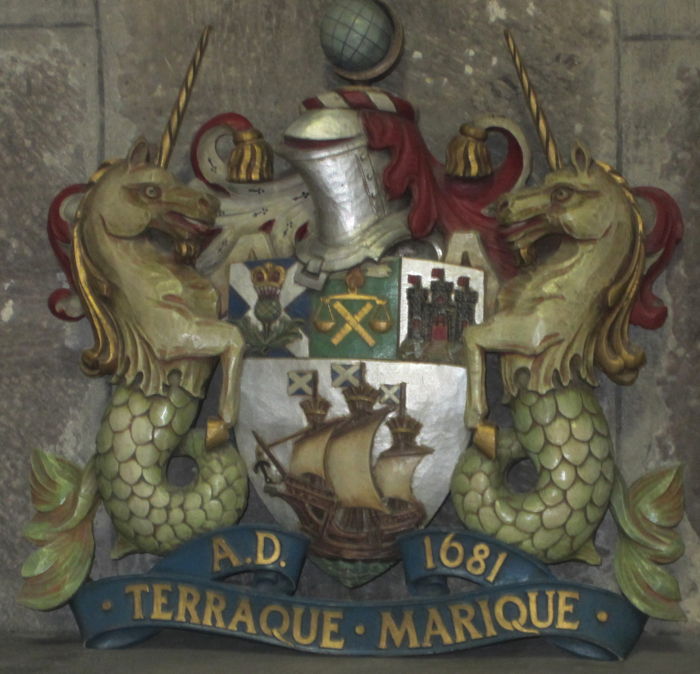
|
|
Tomb of James Graham, 1612-1650, Royalist general and first Marquis of Monrose
Photo 1041, May 2011 |
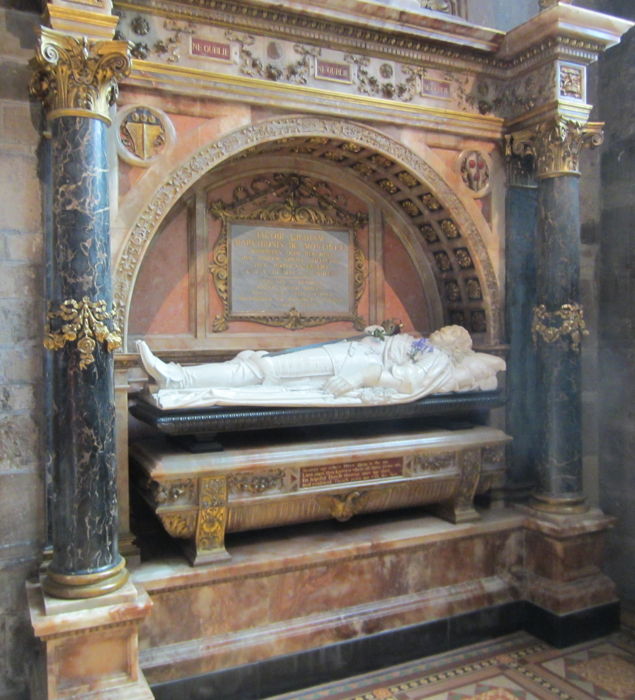
|
|
Tomb of James Graham, detail
Photo 1042, May 2011 |

|
|
The National Covenant 1638 In 1637, King Charles I and Archbishop Laud tried to bring the separate churches of England and Scotland closer together by the introduction of a new Book of Canons to replace John Knox's Book of Discipline as the authority for the organisation of the Kirk and also by the introduction of a modified form of the Book of Common Prayer into Scotland. There were no consultations, either in the Scottish Parliament or in an Assembly of the Kirk, and the proposals met with outrage from Scots anxious to preserve their national and religious identity. A movement against the Laudian reforms gained momentum across Scotland headed by Presbyterian noblemen and radical clergymen. A group of godly Edinburgh women organised a popular protest and, according to tradition, Jenny Geddes flung her prayer stool at the dean of the High Kirk of St Giles in Edinburgh on 23 July 1637 when he tried to read from the new prayer book for the first time. This was followed by a mass riot and an attempt to stone the Bishop of Edinburgh. Similar demonstrations occurred in all the churches of Edinburgh where the new liturgy was introduced. The Covenanter movement became the dominant political and religious force in Scotland following the Glasgow Assembly of 1638. The clash between the King and the Covenanters culminated in the Bishops' Wars of 1639 and 1640. In 1643, during the English Civil War, the objectives of the Covenant were incorporated into the Solemn League and Covenant which secured a military alliance between the English Parliament and the Scottish Covenanters against the Royalists. This alliance was instrumental in bringing about the defeat of the King's cause in the First Civil War.
Photo 1050, May 2011 |
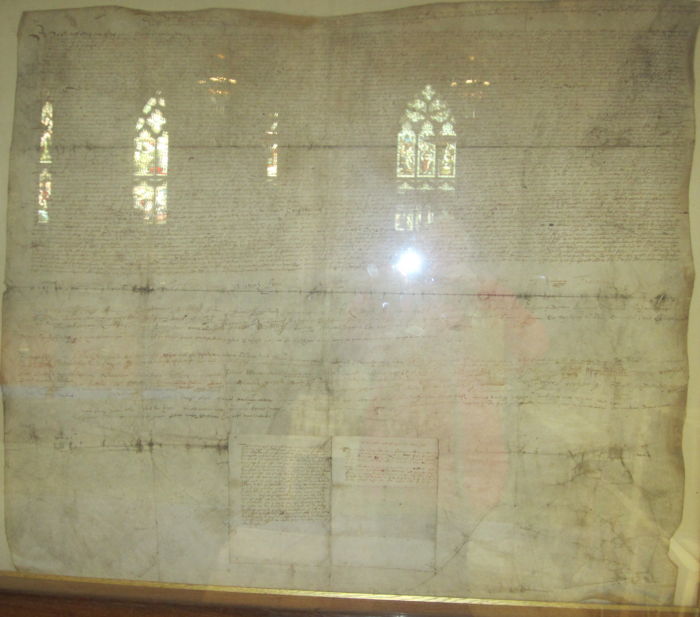
|
|
An Altar Photo 1051, May 2011 |
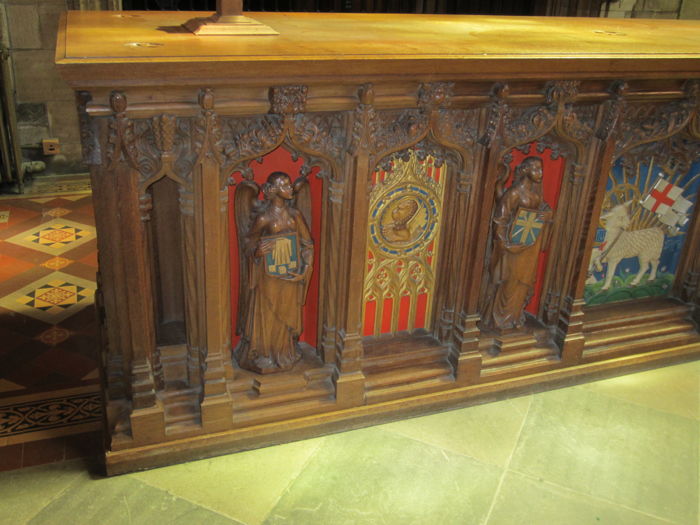
|
|
Stained Glass Window, St. Giles In the later 19th century, stained glass began to be put into the windows which had been largely clear or plain since the Reformation. This was a radical move in a Presbyterian church where such decorations were regarded with great suspicion. They were finally allowed on the basis that they illustrated bible stories and were as such an aid to teaching, and not flippant decoration, or worse still idolatry. Only a small number of windows were completed as part of the 19th-century restoration, but this begun a process that has resulted in the vast majority of windows containing stained glass by the middle of the 20th century. The windows were planned to form a continuous narrative starting in the north-east corner and finishing on the north-west side. Inscription reads: Presented by the Right Honourable Sir James Falshaw Baron Lord Provost of Edinburgh March 10th 1873 Nov 5th 1877 Photo 1034, May 2011 |
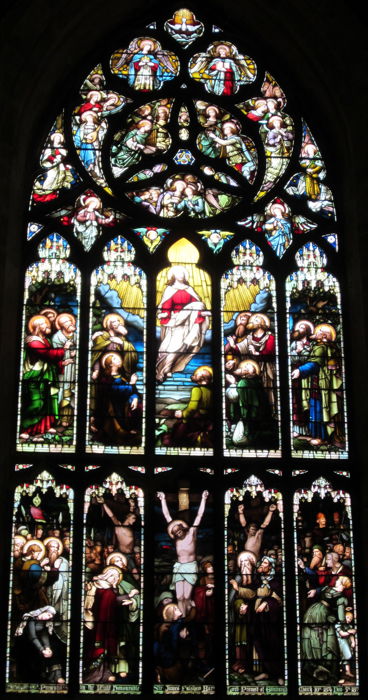
|
|
Stained Glass Window, St. Giles Detail Photo 1008, May 2011 |
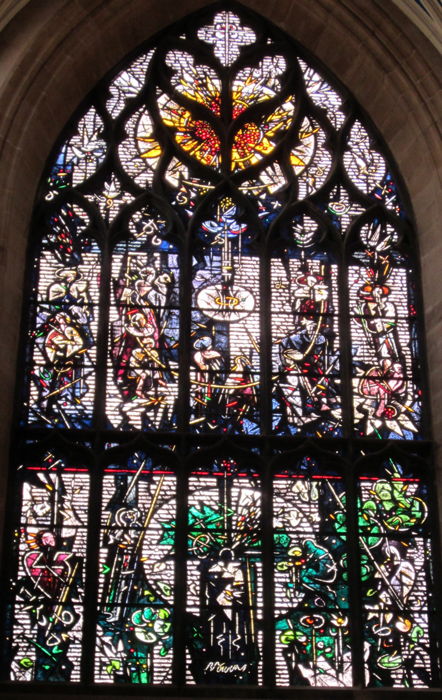
|
|
Stained Glass Window, St. Giles
Photo 1012, May 2011 |
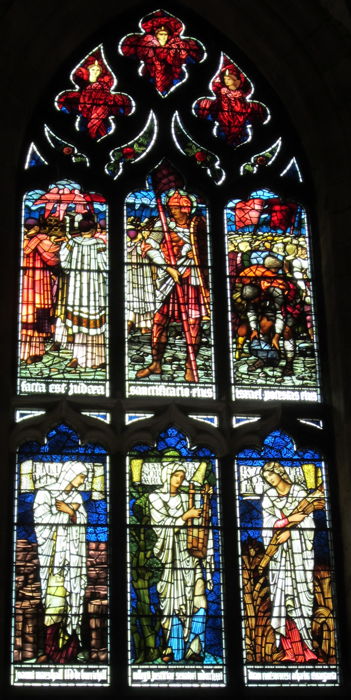
|
|
Stained Glass Window, St. Giles Instriptions on the bottom read, from left: This window was given in 1957 and in memory of her husband and here mother & father Bu Mary Buchanan Cosans for the Robert Romanes Cosens Agnes Lang & Stewart McGlashen Beautification of God's House and other dear ones Photo 1014, May 2011 |

|
|
Stained Glass Window, St. Giles showing coats of arms
Photo 1024, May 2011 |

|
|
Stained Glass Window, St. Giles Reads: In memory of the Repent Murray ... George Stuart Photo 1044, May 2011 |
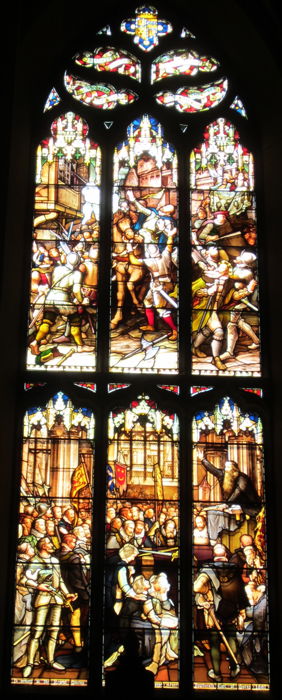
|